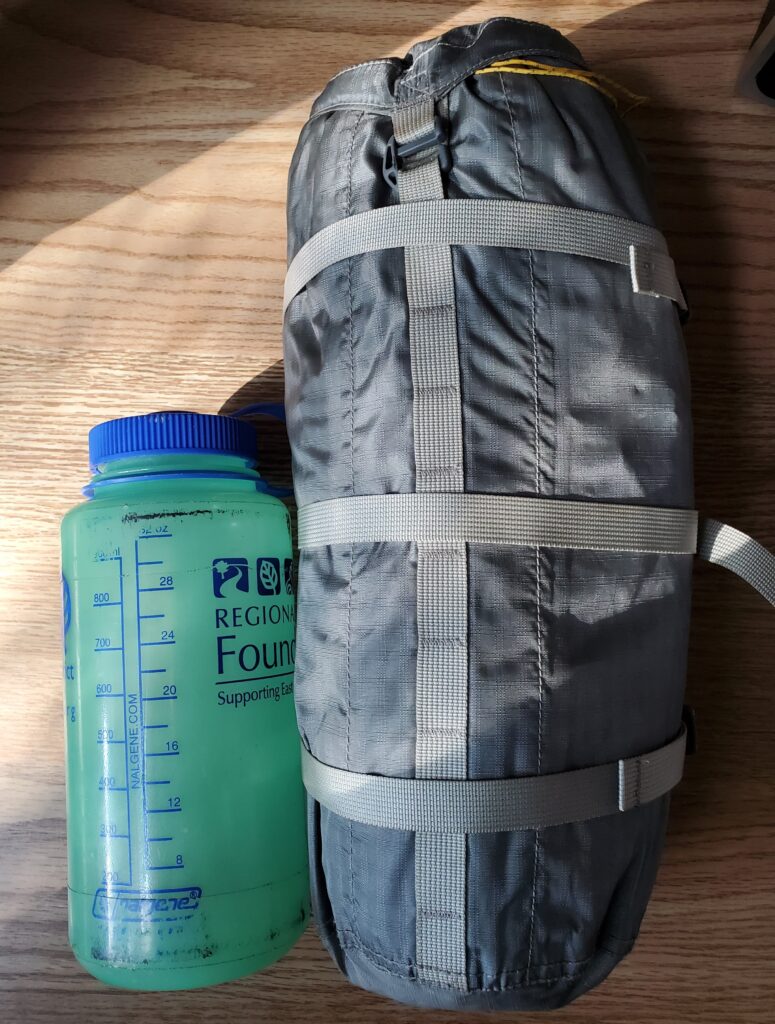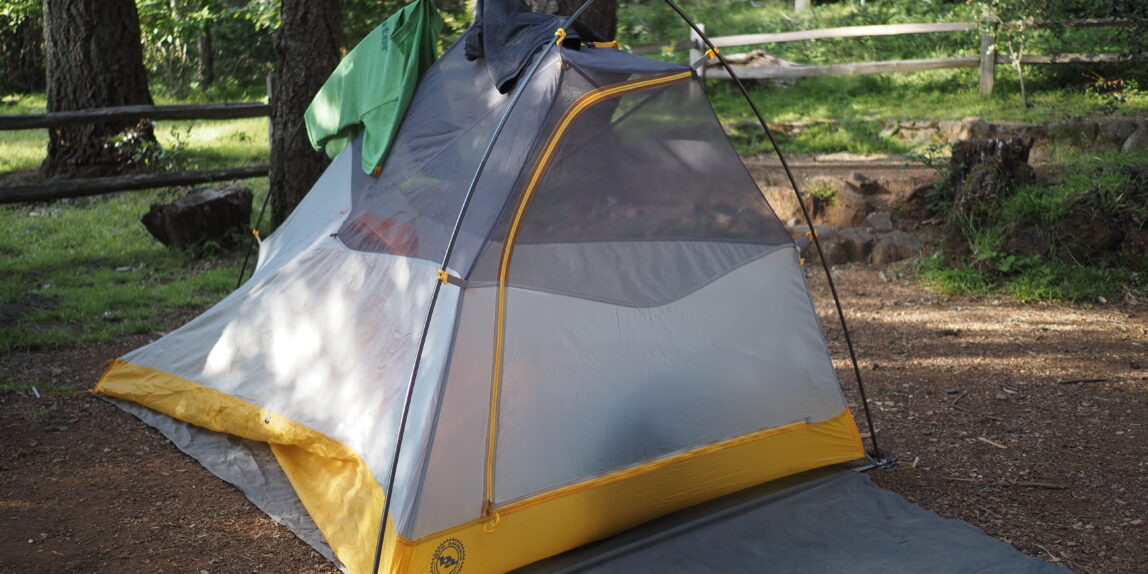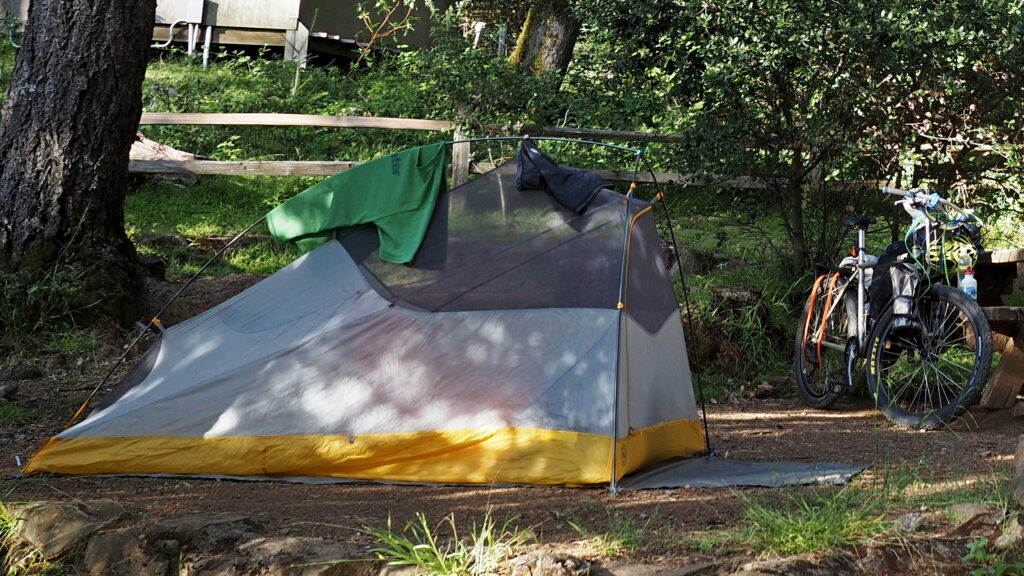
One of the first tents specifically marketed for bikepacking was the Big Agnes Fly Creek Bikepack edition. It’s the exact same design as the regular Fly Creek, except that it has shorter pole segments, only 12″ long, for packing into cramped bikepacking bags, or strapping directly onto handlebars. You can find the exact specs and features at a hundred other sources, so I’ll continue with information that I hope is unique.
This tent has sheltered me in California, Utah, New Mexico, Texas, and Angola. It’s kept me dry in alpine rainstorms and kept its shape in sharp coastal winds. Other than some dirt on the footprint, it shows no signs of use. The included high-quality stakes are still perfectly straight. The fabric, zippers, stitches, seam sealing, and attachment points are all intact and I expect them to continue functioning for many more nights on the trail.
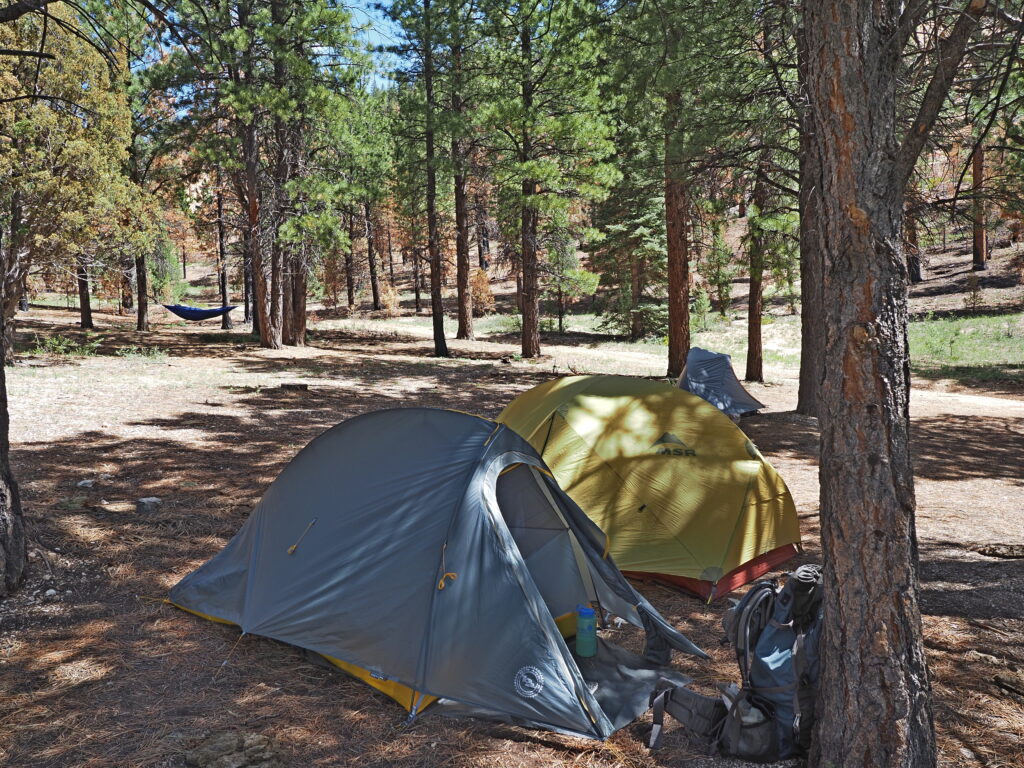
Despite all of these strengths, I’m looking for a new tent for my upcoming trip. Why?
- Single entrance at the head side; and
- Not free-standing.
These are idiosyncratic reasons and won’t apply to most people, but I write the following hoping that it’s helpful for those with similar quirks.
Cultural residue may explain my discomfort with the single entrance. I was raised to remove my shoes at the door so as not to track dirt into the house. Within a dirt-free house, the bed is the ultimate shrine to cleanliness. I shower before going to bed and don’t wear street clothes even to sit on my bed. Experience tells me that these habits are unusual in the mainstream USA, but common in households of some cultural backgrounds.
Of course, dirt’s a crucial part of the outdoor experience, but I still like to have a relatively clean sleeping space, especially where my face rests. The problem with having a single door at the head end is that the face zone is never dirt-free. Imagine entering the tent and sitting down to take off your shoes/socks and change your pants. The entrance area is where you park your butt, and then your feet pass over it to get to where they belong. The ironic thing is that I’m not a germaphobe at all – I wear jeans until they smell weird in the rain, I shower only when needed, I avoid antibiotics, I rarely wash my hands with soap. But I draw my line at having dirt and dust near my face when I’m sleeping.
Looking at the photos now, it’s glaringly obvious that this would be a problem. In my defense, I think it’s an unfortunate reality (in all aspects of life, not just camping – see marriage and divorce) that anticipating even obvious problems is difficult before one experiences them first-hand. My first backpacking tent was an MSR Hubba Hubba, with two doors placed in the middle of the tent, a design that facilitates keeping one side very clean. Never having used a one-door tent, I didn’t know how much it would bother me!
The second thing is that the tent is not fully freestanding (semi-freestanding). In this case, four stakes (or other external attachment) provide the tension to maintain its shape. This isn’t a problem for those who always camp in the wild. But for pitching a tent indoors, on a concrete slab, or on other un-stakeable surfaces, a freestanding tent works much better. I had this problem a few times in Angola (see photo), and I anticipate needing to do this on my upcoming trip since I’ll often be camping in towns.
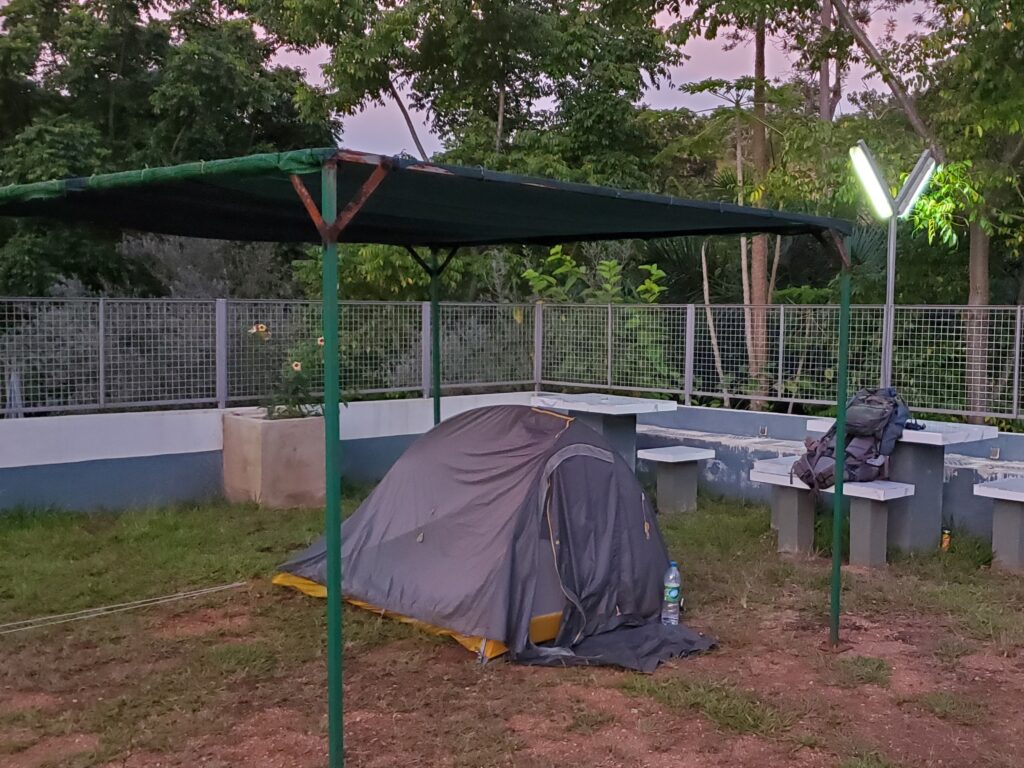
Again, these “flaws” are idiosyncratic. Most people don’t mind, and Fly Creek is designed to optimize low weight, material costs, and packability. Big Agnes makes similar tents that solve the first problem (the Tiger Wall) and both problems (the Copper Spur). Alas, I was swayed by the lower price and lower weight of the Fly Creek. In hindsight, the bikepack version of the Copper Spur would’ve been a better choice.
Anyone looking for a good deal on a lovingly cared-for Big Agnes Fly Creek 2p bikepacking tent?
